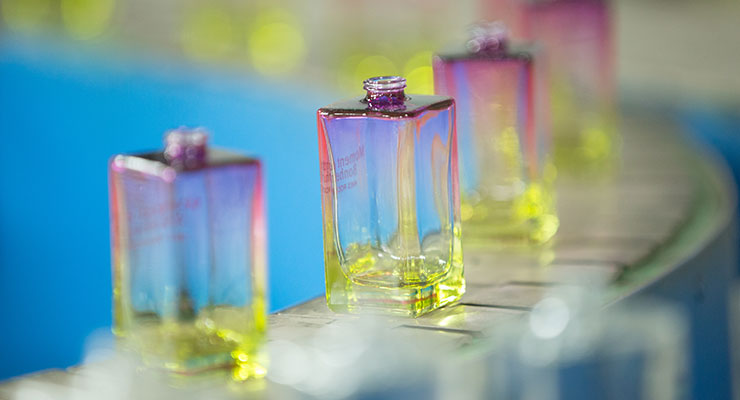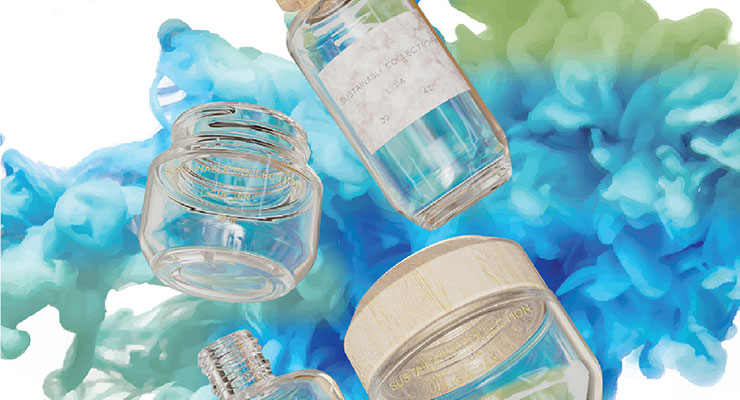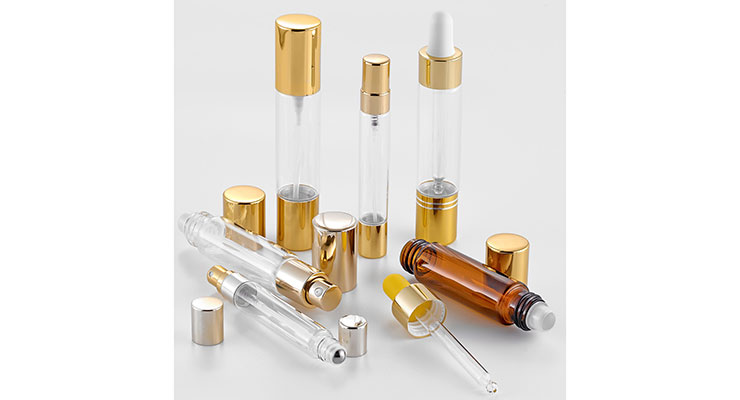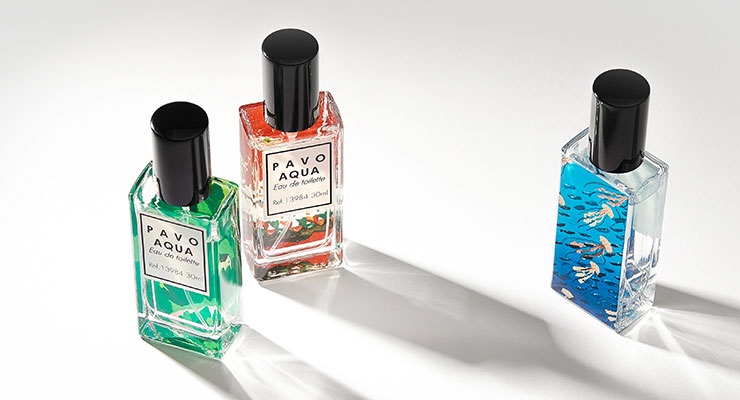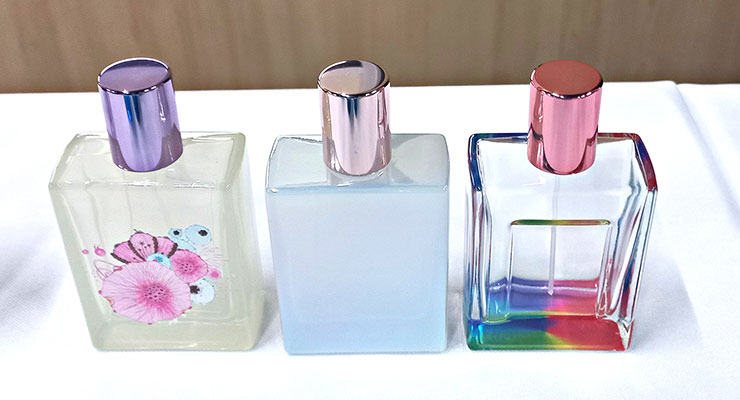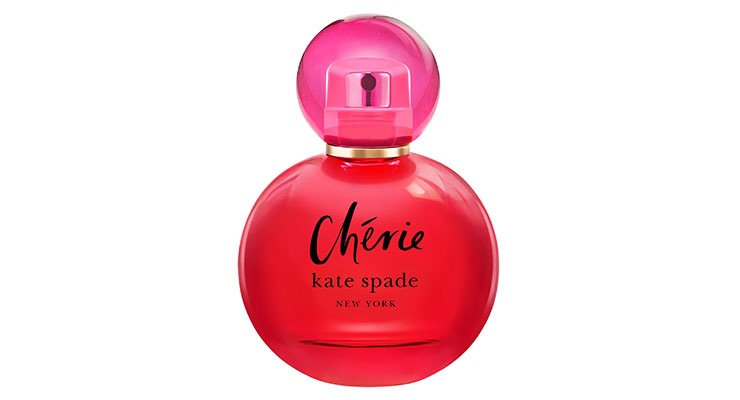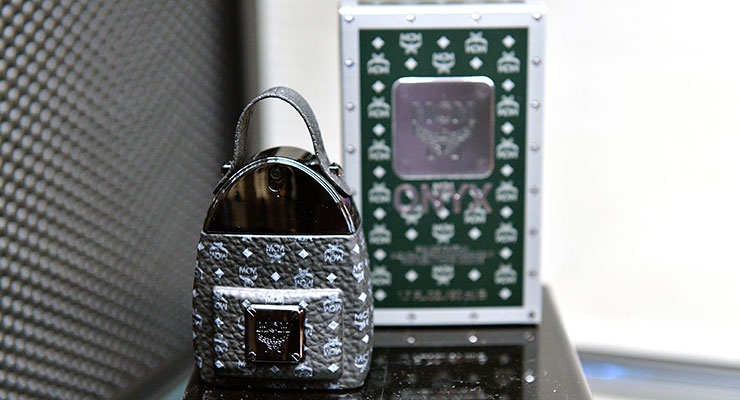Marie Redding, Senior Editor07.19.23
The global fragrance market size was valued at $50.9 billion in 2022, and is expected to register a compound annual growth rate of 5.9% from 2023 to 2030, according to Grand View Research. Analysts say consumers are increasing spending on premium and luxury fragrances, which is driving market growth.
NPD Beauty Industry Advisor and Beauty Packaging’s board member Larissa Jensen calls fragrance a "standout catgeory" in the U.S. prestige beauty market. Fragrance sales rose by 11% last year as demand grew for niche brands and high-concentration perfumes—and the category boasted double-digit growth during the opening weeks of 2023.
“The fragrance category is booming, particularly in the U.S. where sales are far exceeding pre-pandemic levels,” says Sheherazade Chamlou, vice president of sales, Beauty, Americas, SGD Pharma.
Rising fragrance sales mean a greater demand for fragrance bottles. “Glass is the material of choice for high-quality fragrances—nothing matches its elegance, clarity and sparkle. It combines exceptional protection from oxidation and light while being infinitely recyclable,” says Chamlou.
What types of glass bottles are in demand for fragrances? “We see a trending demand toward both custom-designed and stock bottles,” says John Schofield, president, and owner of Screen Tech/Spraye Tech. “Fragrance brands are choosing the same bottle for multiple skus, not only flankers,” he says.
Fragrance brands are leveraging the “‘premiumization” trend, says Douglas Thompson, senior vice president of sales, marketing, and product development at PGP Glass USA, Inc. “We are seeing a higher demand for glass bottles with thick bottoms for prestige and masstige brands,” he says.
Mark Bellard, president and owner of Siloa, says, “Fragrance consumers will pay more for something beautiful and exclusive that makes a statement. Perfume bottles have an ornamental value. Brands want to design something different that stands out.”
Suppliers Offer Decorating Tips & Talk About Trends
Fragrance brands are decorating bottles in many ways to connect with consumers and reflect their aesthetics. “Some brands are moving away from metallization in favor of textured finishes,” says Thompson, of PGP Glass USA. “We also see an increasing number of prestige brands requesting minimal decorations, while masstige brands are leaning toward vibrant colors, personalization, nature-centric prints, and earthy tones,” he says.Thompson also notes that bottle designers seem more focused on using only necessary visual elements that add to a brand’s story instead of choosing glamorous accents that can look disconnected from a brand’s DNA. “Our core purpose is to enhance the value of the customer’s brand. We understand that the bottle must be appealing and visually complement the brand story. We work closely with the customer from design to decoration to understand and showcase a fragrance,” he explains.
PGP Glass offers full-service decorating capabilities and has dedicated facilities for premium glass decorating techniques, including printing, hot-foil stamping, coating, frosting, decal, fitment gluing, and metallization. “We offer a diverse portfolio of pre-designed options, showcasing designs that can be readily customized to meet a brand’s unique requirements,” says Thompson. The supplier’s capabilities include spraying, silk-screening, pad printing, hot stamping, acid etching, metallization and more.
Schofield says opaque matte colors and “crisp translucent” colors are most often requested. Screen Tech/Spraye Tech’s water-based spray and organic print capabilities offer brands eco-friendly ways to achieve these looks. “We also see a growing number of requests for our UV barrier spray coating, he adds. “And our unique in-house color matching and mixing capabilities provide our customers with greater speed to market,” he says.
Digital printing offers fragrance brands even more versatility. “It has no color limitations and colorful patterns can be directly printed from electronic files,” says Chamlou. “Digital decorations open a new world of possibilities in terms of personalization and customization capabilities,” she says.
Refillable & Lightweight Fragrance Bottles
Glass can be heavy, which is a drawback for a brand aiming to lower its carbon footprint. Lightweight glass bottles provide a more eco-friendly option for fragrances. Verescence recently launched its Moon and Gem lightweight glass bottles, which are also refillable.Developed in collaboration with renowned designer Thierry De Baschmakoff, Moon and Gem showcase Verescence’s technical expertise in creating lightweight glass bottles in complex shapes. “They’re the perfect combination of luxury and sustainability,” says Céline Le Marre, marketing and communication project manager, Verescence.
The 100ml Moon bottle weighs 106 grams, while the 100ml Gem weighs 97 grams. “Moon” features an organic shape with an off-center neck. “Gem”has a striking, geometrical design with sharp angles and a broad octagonal facing—resembling a precious gem.
“The bottles are personalized with a spherical mono-material cap made by premium wood component maker Minelli Spa, to offer a 100% eco-designed concept,” says Céline Le Marre, marketing and communications project manager, at Verescence.
Vitro, also has a new lightweight bottle design called “Ligia.” “It means ‘light’ in English,” explains Victor Rodríguez, vice president of global sales and marketing at Vitro. The eco-friendly glass collection features refillable bottles with a minimalist design and wood caps.
Fragrance Caps & Closures
Pairing a fragrance bottle with an ornate cap will always catch a shopper’s eye, and can delight the consumer with each use. Christian Louboutin Beauty’s Loubimar fragrance by Puig was recently named Packaging of the Year at The Fragrance Foundation Awards. It has an ornate metal cap produced by TNT Global that looks like an anchor.Lombardi Design & Manufacturing specializes in prestige closures. “For us, what’s driving fragrance closures is the same as other categories—sustainability,” says Jack Albanese, the company’s director of new business development. “We are replacing traditionally unsustainable resins with chemically renewed post-consumer materials,” he says. “Historically, many famous designs for fragrance closures mimicked glasslike features of clarity, sculpted shapes, and depth. Until recently, our sustainable resin choices were quite limited,” he says.
Lombardi achieved its ISCC+ certification. The supplier offers heavy-walled, clear closures produced in renewed post-consumer PET and other resins to fulfill requests.
Siloa has a new line of wooden caps produced from sustainable forests. “When combined with our removable 100% PCR inner cap, these are suitable for eco-friendly disposal and recycling,” says Bellard.
The Rise in Sample Sets & Travel Sizes
Consumers are shifting from shopping in-store to buying fragrances online, so there is a growing need for minis, samplers, trial sets, and travel sizes. Just in time for summer trips, Fenty Beauty by Rihanna, a Kendo brand, launched its Fenty Eau de Parfum fragrance in a 10ml travel-size spray package.Travel-size fragrances are also popular because they are less expensive to purchase. Fragrance brands know consumers will be more willing to take a risk on buying a smaller size fragrance online. “Department store fragrance counters are not going anywhere, but sample-focused e-commerce models continue to encourage fragrance discovery,” says SGD’s Chamlou. “There’s a high demand for sample size packaging for fragrances because consumers are more willing to try new scents—and there is an increasing number of perfume subscription boxes,” she explains.
SGD Pharma recently added the Mini Sampler Perfume Kit to its expanding fragrance packaging lineup. The supplier’s pharmaceutical-grade mini-sampler tubular vials are available in 1.5-, 2-, and 2.6ml sizes. “They come in clear or customized ceramic silk-screening in 19 monochrome PMS colors,” says Chamlou. “These new sampler vials are essential components for the growing demand in ‘on-the-go’ fragrances,” she says.
Siloa offers a travel-size refillable option—its Dual Neck Vials. “A brand can offer refills in-store or by mail,” says Bellard. “Indie fragrance brands tend to have a more dynamic structure and are open to pursuing new ideas more quickly, like refillable packaging solutions,” he says.
Glass Production
Where are fragrance bottles being produced? Here are the latest developments from some of the largest glass manufacturers—and their capabilities.Vitro Envases recently invested $70 million in a new furnace. “This new furnace, capable of producing 230 tons daily, strengthens our ability to meet the growing demands of our customers, as well as increase our flexibility and offer high value-added products through cutting-edge technology and sustainable production processes,” said Shlomo Frymerman, director of Vitro’s Glass Containers Business Unit.
Now the supplier’s plant in Toluca, state of Mexico, is one of the largest glass packaging plants in the world. It was designed and built with cutting-edge technology to optimize energy consumption and minimize CO2 emissions.
It produces glass packaging for cosmetics, premium liquors, and specialties.
PGP Glass says it produces over 550 million premium perfume bottles annually for its customers in over 50 countries, on its 64 production lines and 11 furnaces. “We have the world’s largest production capacities—at 705 tons per day—dedicated to cosmetics and perfumery. Our world-class facilities boast cutting-edge design capabilities, a creative design and innovation studio, and advanced CNC machine workshops dedicated to manufacturing flawless molds,” says Sanjay Tiwari, CEO at PGP Glass USA Inc.
SGD Pharma says it is one of the world’s leading glass packaging manufacturers with a reputation for innovation. The company says its plant in Zhanjiang, China is an established beauty and cosmetic center of excellence. Decorating capabilities include lacquering, frosting, silk printing, coloring, and hot-stamping. “The local Zhanjiang R&D team is dedicated to beauty market innovation and has been organizing decoration seminars for the last ten years, showcasing innovations including digital printing on glass, RGB printing and PVD coating,” says Chamlou.
SMCG/Somang Glass says it is known for incorporating high levels of PCR in every glass bottle. “We use 60% PCR, which is the highest level. We paved the way for using PCR glass in Korea,” says James Jin, sales director.
Verescence has a production capacity of 600 million bottles per year. The company has over 120 years of glass expertise and produces innovative packaging solutions across its four glass production sites and five finishing sites in France, Spain, the U.S., and South Korea.
A Focus on a More Sustainable Future
What lies ahead? “The refill revolution is underway,” says PGP’s Thompson. “Sustainability is not just a trend but a significant global movement, and we are committed to continue working towards sustainability and sustainable alternatives,” he says.SGD’s Chamlou says, “We are entering a new era of perfume history, and the market continues to evolve with unconventional olfactory notes, ethical and eco-friendly production methods, and new fragrance application gestures.
Consumers constantly changing lifestyles will continue to play a significant role in the growth of the fragrance packaging industry.”
Chamlou says the continued demand for fragrance bottles that stand apart from competitors will continue to inspire packaging suppliers to develop innovations that will delight consumers. “The digital world is also having an impact. Many of the larger fragrance houses are entering the metaverse and creating scent experiences for potential consumers.” Chamlou adds, “Where brands go, suppliers will follow—the possibilities are endless.”

3 BOTTLE DESIGN TRENDS—Classic, Colorful, Ornate
There are many ways a brand can use design to ensure a fragrance bottle conveys a brand’s identity—or the scent inside the bottle. Three recent launches represent three different approaches to fragrance packaging.Non Gender Specific’s Flooid is in a bottle that looks timeless and classic; Kate Spade Chérie looks colorful and modern; and MCM, a German luxury fashion house, created an eye-catching design with ornate details for Onyx.
All three brands use color and design elements reflecting the fragrance. Non Gender Specific, a brand founded by Andrew Glass “to have no gender boundaries,” launched its Flooid fragrance in 2019—and then redesigned and relaunched it in March. The short round glass bottle looks modern, and its amber color reflects the scent’s warm amber mid-notes. Other notes include lavender, patchouli, sweet orange, grapefruit, bergamot, white musk, oud, fresh moss, and earthy vetiver. The bottle comes in a plantable carton.
Inter Parfums launched Kate Spade New York’s Cherie fragrance earlier this year. The brightly colored pop-art-inspired bottle undoubtedly reflects the fruity floral juice. It’s red, orb-shaped, and paired with a hot pink translucent cap. Fragrance notes include raspberry, mandarin, sweet pea, jasmine, musks, and white woods.
MCM Onyx, another Inter Parfums brand, is a vegan fragrance made with over 79% biodegradable ingredients. Eighty-nine percent of its ingredients were created using green chemistry principles, and over 72% of its sustainably sourced “Naturals Together” ingredients help make a positive social impact on local communities worldwide.
Like the brand’s other fragrances, the Onyx bottle looks “dressed” in faux leather. “Onyx re-imagines our Stark Backpack bottle in black Visetos with gunmetal accents,” the brand states. Visetos is MCM›s most recognizable motif—”MCM” with a laurel leaf to symbolize victory, honor, and valor. The bottle is adorned with an engraved plate, like the numbered plates on its bags.
Sabine Brunner, president of MCM, says, “This design is at the heart of MCM DNA, epitomizing the free spirit of travel. We are excited about this new fragrance that takes our tribe of 21st century digital nomads on a transcending journey from ingredient to sentiment, fragrance to feeling, and emotion.”


